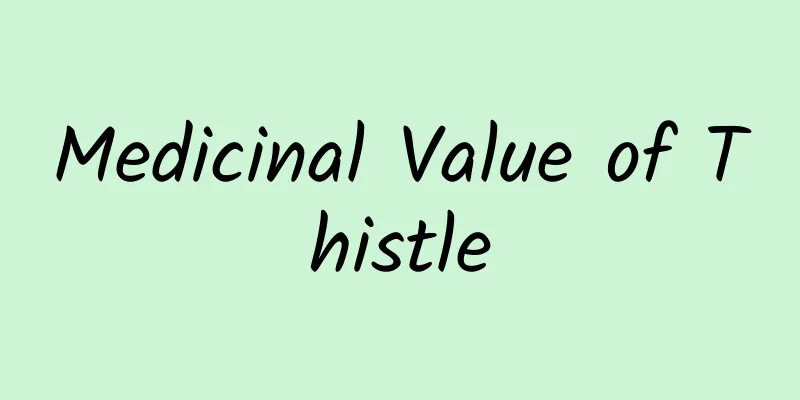Medicinal Value of Thistle

|
Have you heard of thistle? Thistle, as a plant of the Asteraceae family, is actually very common for rural people. However, its scientific name is Thistle, so people are more or less unfamiliar with it. However, if you speak it in the dialect of each place, everyone will feel very familiar with it. Thistle grows in a wide range and can be found in many places including China, North Korea, and South Korea. Moreover, thistle is a wild plant and does not require special care.
Thistle is not very particular about the conditions in which it lives. This wild Asteraceae plant is most commonly used as food in rural areas. Farmers pick thistle leaves, cook them and make delicious dishes. The taste is a bit bitter, which is especially suitable for people who like bitter taste. Besides being edible, what other medicinal uses does thistle have? Thistle contains flavonoids, collectively known as silymarin, which is an effective ingredient with liver-protecting function and has a direct effect on liver cells. Thistle is a popular liver tonic in Europe. It contains a flavonoid called silymarin, which has a direct effect on liver cells. Clinical treatment cases: 1) For acute viral hepatitis, there are reports that milk thistle can reduce complications after treatment, allowing patients to recover more quickly and leave the hospital and return home earlier. Patients with hepatitis B who take milk thistle are more likely to develop hepatitis B antibodies. This is a clinical follow-up research report from Western countries. China has more vertical infections, and there is no data to verify whether there are similar results. 2) Alcoholic liver disease: Take 140 mg of milk thistle twice a day for six months. After six months, 17 patients with long-term alcoholism showed a significant decrease in serum bilirubin, liver index, gamma-glutamyl transferrin, and type III procollagen readings. In addition, microscopic observation of liver tissue pathology showed that after taking milk thistle, the original lymphocyte proliferation slowed down and fat peroxidation was improved. 3) Toxic hepatitis. The death cap mushroom is currently considered one of the most poisonous mushrooms in the world and can cause severe liver damage and death. The value of thistle in the medical field is obvious to all. The liver is an important organ for human metabolism and hematopoiesis, and the role of thistle in nourishing and protecting the liver is particularly obvious. Therefore, in daily life, in order to prevent problems before they happen, we can add some foods made from thistle to our diet. |
<<: The efficacy and role of the Chinese herbal medicine of purple back sky
>>: The efficacy of deer antler blood wine
Recommend
What are the treatments for cold urticaria?
Cold urticaria is also a type of urticaria, but n...
What causes an elderly person to suddenly become deaf? Are there any signs of deafness?
When people reach a certain age, their body funct...
What to do if I am allergic to safflower oil and it itches
Many people think that safflower oil has no side ...
What is the effect of moxibustion on Sanyinjiao?
Moxibustion at Sanyinjiao can have a wide range o...
The difference between blistering and scalding caused by moxibustion
In traditional Chinese medicine, moxibustion is a...
What to do about inner corner wrinkles?
Wrinkles are something that everyone will experie...
Sini Decoction for Expelling Cold
Sini Decoction is a warming agent in traditional ...
How to reduce the nose wings more effectively?
Many people have relatively large nose wings, whi...
Can Panax notoginseng powder and Ganoderma lucidum spore powder be taken together?
Ganoderma lucidum spore powder and Panax notogins...
What are the methods to eliminate baby bloating?
Babies with bloated stomachs are very uncomfortab...
Early detection of cerebral thrombosis, what are the symptoms of cerebral thrombosis?
Cerebral thrombosis is relatively common clinical...
Chromosome testing
When it comes to chromosomes, many people are fam...
Hissing sound in the ears like electricity
In daily life, sometimes we hear a hissing sound ...
What exactly is thermosensitive moxibustion? Understand it in seconds!
Thermosensitive moxibustion: The heat generated b...
How come scratches on the face don't leave scars?
Scratches are very common in daily life, so scars...









